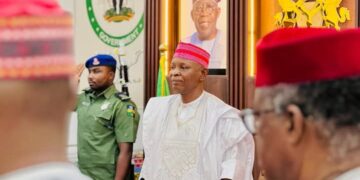BY
Nasiru Waziri.
The BRICS nations (Brazil, Russia, India, China, and South Africa) are playing an increasingly significant role in the international financial institution
The BRICS nations (Brazil, Russia, India, China, and South Africa) are playing an increasingly significant role in the international financial system. Their primary goal is to reduce dependence on the US dollar and challenge the dominance of Western financial institutions.
By pursuing these initiatives, BRICS aims to create a more multipolar international financial system, reducing the dominance of Western institutions and promoting greater economic cooperation among emerging economies.
The BRICS nations (Brazil, Russia, India, China, and South Africa) are playing an increasingly significant role in the international financial system. Their primary goal is to reduce dependence on the US dollar and challenge the dominance of Western financial institutions.
*Key Initiatives:*
– *Alternative to SWIFT*: BRICS has announced plans to develop a financial messaging system similar to SWIFT, allowing for transactions between member countries without relying on Western-dominated systems ¹.
– *De-dollarization*: BRICS nations aim to reduce their reliance on the US dollar in international trade, promoting the use of local currencies instead ² ³.
– *New Development Bank*: The BRICS New Development Bank (NDB) provides financing for infrastructure and sustainable development projects in member countries, offering an alternative to traditional Western-led institutions.
– *Expansion and Cooperation*:
– BRICS is expanding its membership and strengthening cooperation with other emerging economies, further solidifying its position in the global financial landscape.
–
EURO AMERICAN WEST RIVALRY .
The United States and the BRICS nations (Brazil, Russia, India, China, and South Africa) have distinct economic, political, and cultural systems. European stronger state often back U.S in most of its policies Here’s a brief comparison:
# Economic Comparison
1. *GDP (nominal)*: The United States has the largest economy, with a GDP of over $22 trillion. China, a BRICS member, is second, with a GDP of over $16 trillion.
2. *Trade*: The United States is a significant trading partner for many countries, while the BRICS nations are increasingly focusing on intra-BRICS trade and cooperation.
3. *Investment*: The United States attracts significant foreign investment, while the BRICS countries are also becoming popular investment destinations.
# Political Comparison
1. *Governance*: The United States is a federal republic with a democratic system, while the BRICS nations have varying forms of government, including authoritarian regimes (China, Russia) and democracies (India, Brazil, South Africa).
2. *Global Influence*: The United States has significant global influence through its military, economic, and cultural presence. The BRICS nations are increasingly asserting their influence in regional and global affairs.
3. *Multilateralism*: The United States has been a key player in shaping global institutions and agreements, while the BRICS nations are promoting alternative multilateral frameworks, such as the BRICS New Development Bank.
# Cultural Comparison
1. *Values*: The United States is often associated with values like individualism, democracy, and free markets. The BRICS nations have diverse cultural values, with some emphasizing collectivism, state-led development, and social welfare.
2. *Soft Power*: The United States has significant soft power through its cultural exports (music, movies, technology), while the BRICS nations are also promoting their cultural heritage and values globally.
3. *Education*: The United States is home to many of the world’s top universities, while the BRICS nations are investing heavily in education and research to drive innovation and development.
# Geopolitical Dynamics
1. *Rivalry*: The United States and China, in particular, are engaged in a geopolitical rivalry, with competition for influence in trade, technology, and security.
2. *Cooperation*: Despite tensions, there are areas of cooperation between the United States and BRICS nations, such as on global health, climate change, and counter-terrorism.
3. *Multipolar World*: The rise of the BRICS nations is contributing to a multipolar world, where multiple centers of power and influence are emerging, challenging the traditional dominance of the United States and other Western powers.
In conclusion, the United States and the BRICS nations represent different economic, political, and cultural systems. While there are areas of cooperation, there are also significant rivalries and tensions, particularly between the United States and China. As the global landscape continues to evolve, the relationships between these nations will play a crucial role in shaping the future of international relations.























 You can install this WP plugin on your website from the WordPress official website:
You can install this WP plugin on your website from the WordPress official website: 